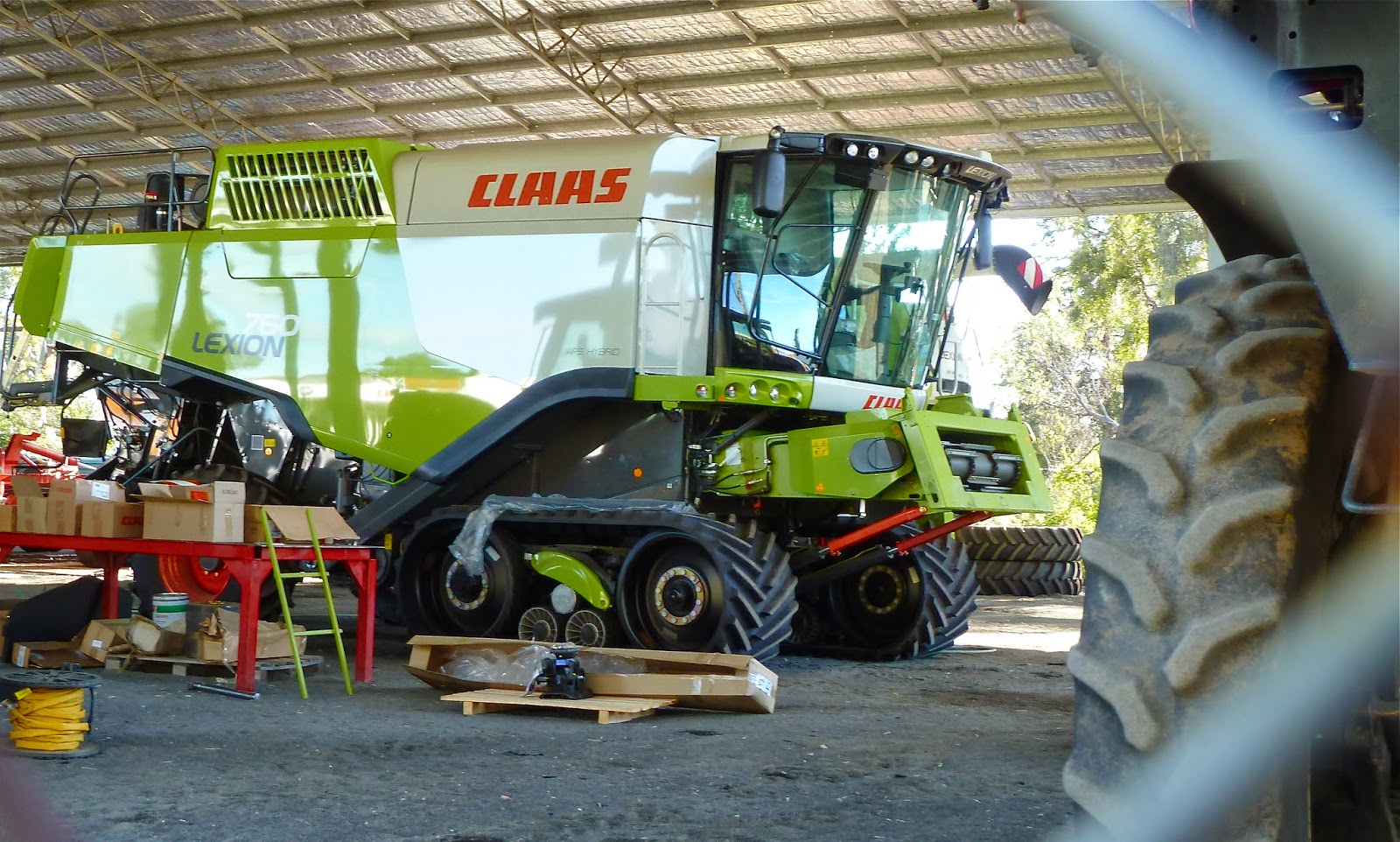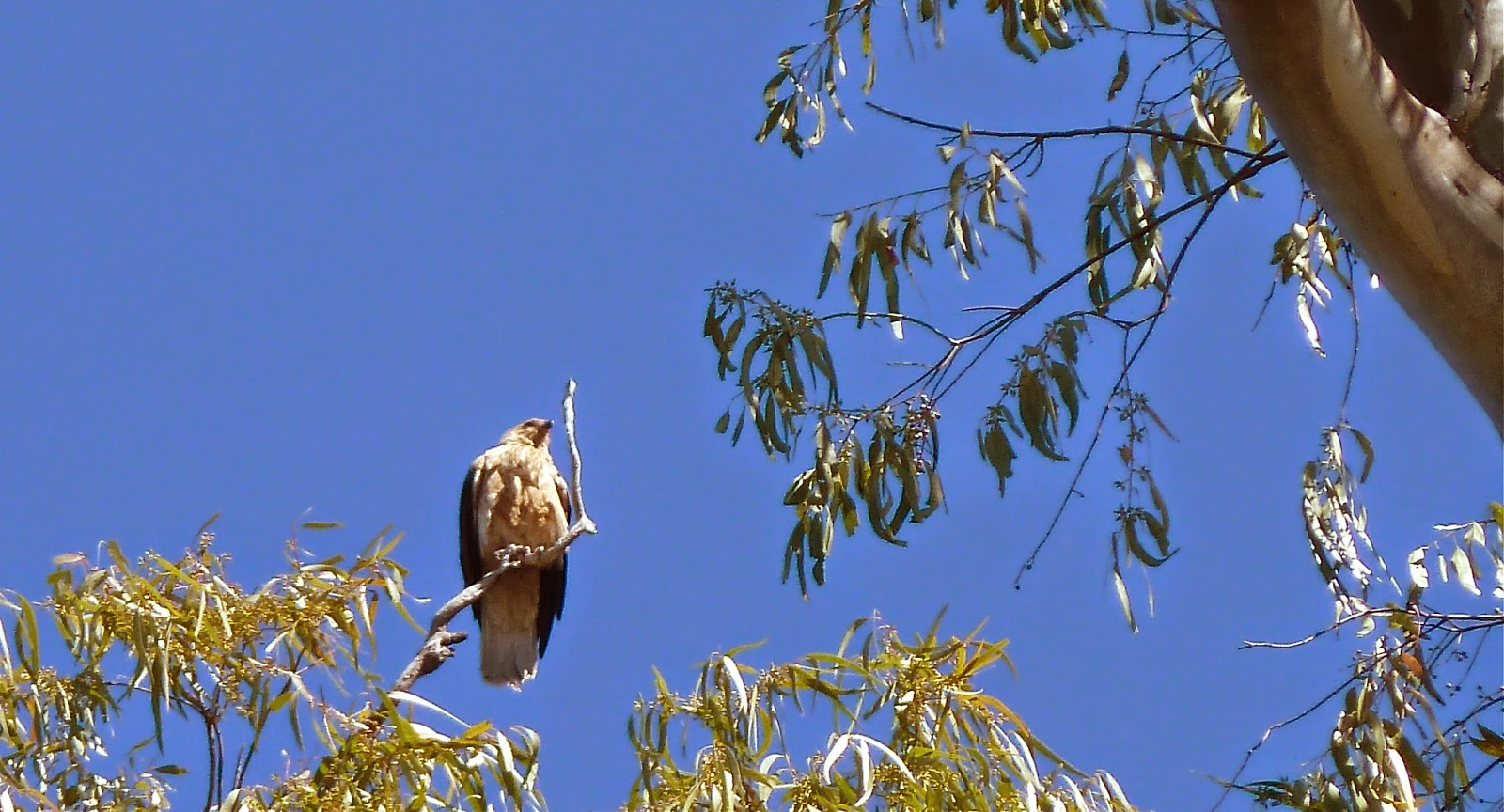From Moree we took the Newell Highway northwest in the direction of Goondiwindi, which sits on the MacIntyre River just inside Queensland. North from Goondiwindi the Newell becomes the Leichhardt Highway, which almost brought us full circle. Some 225 kilometres further north, at Miles, we had turned off the Warrego Highway on to the Leichhardt on day one of the trip.
Google reckoned it would only take about five and a half hours to drive from Moree to Brisbane, so I had a plan to linger awhile once we reached Goondiwindi. Increasingly there were wide cleared plains; high-intensity-green low crops in furrows (alfalfa?), the remains of cotton stalks, and blown cotton along the wayside; large advertising hoardings and the inevitable hamburger chain, last seen two weeks ago; elaborate overtaking lanes for taking out many trucks, several oversize loads, and more traffic generally. On the New South Wales side of the border is twin town Boggabilla, a small town with a big silo.
All the time, of course, I was still trying to capture my interesting farm pic, with limited success.
We meandered along the tree-lined MacIntyre River Walk for quite a while. It was lovely, on a beautiful day. There were plenty of birds: in fact, the name Goondiwindi derives from an Aboriginal word meaning resting place of the birds. Some of the Red River Gums are more than 100 years old. I spotted a Galah in a nest high in a hollow of one of them – plus a pelican, three species of cormorants, a darter, a Great Egret and a juvenile Whistling Kite.
When explorer Allan Cunningham named the MacIntyre after the man who had supplied the horses and drays for his expedition in 1827, the river was little more than a series of ponds that were only connected after good rains. The needs of subsequent pastoral properties led to the construction of a weir to regulate the flow. There wasn't a bridge for a long time, however. All goods headed across the border had to be ferried across by punt and rope. The first bridge was built in the 1870s, and this was replaced by the current Borders Bridge in 1914. Thankfully, most traffic now uses a bypass around the town that was not constructed until 1992. The bridge is beautiful.
So many towns on our travels have a history of flooding, and Goondiwindi was no exception. Records go back to 1886, since when 60 major flood events have happened. In 1956, three serious floods – to heights of over 10 metres – occurred within six months, and this resulted in the construction of a levee to protect the town from an 11-metre level. By the Bridge is a monument that commemorates the events of that year. The MacIntyre broke all height records during the floods of 2011, however, reaching 10.64 metres.
From Goondiwindi, we took the Cunningham Highway to Warwick, a distance of just over 200 kilometres. It felt like a long way, I'm not exactly sure why. The agriculture changed: sheep grazed in what looked like cropped fields; there were olive trees and vines. Then the sheep gave way to cows, and we climbed up through tumpy country. We entered the Condamine catchment – familiar territory. It rained, briefly; and still there were dead roos by the road. A cop car was hidden down a track on our left, speed-trapping oncoming cars approaching downhill. Well and truly back in Queensland, then.
Mid-afternoon light complemented the outlying hills and valleys of the Main Range, and the climb up and over Cunningham's Gap was as lovely as ever, complete with the sound of Tink-Tinks (Bell Miners). For the first time we noticed the damage they've done to the forest. Their charming, mesmerising call is in fact a warning to other birds to stay away. Instead of removing insects that are harmful to the eucalypts, Bellbirds 'farm' them, removing their starchy secretions (called lerp) but leaving the insect to produce more food for them. If insect numbers increase enough, the tree dies. This we had learned from biologist Tim Low who has written a fascinating book called Where Song Began. The answer is Australia, whose birds changed the world, he claims. Yet another reason to diligently protect their habitats.
Mid-afternoon light complemented the outlying hills and valleys of the Main Range, and the climb up and over Cunningham's Gap was as lovely as ever, complete with the sound of Tink-Tinks (Bell Miners). For the first time we noticed the damage they've done to the forest. Their charming, mesmerising call is in fact a warning to other birds to stay away. Instead of removing insects that are harmful to the eucalypts, Bellbirds 'farm' them, removing their starchy secretions (called lerp) but leaving the insect to produce more food for them. If insect numbers increase enough, the tree dies. This we had learned from biologist Tim Low who has written a fascinating book called Where Song Began. The answer is Australia, whose birds changed the world, he claims. Yet another reason to diligently protect their habitats.
We had left just after dawn, and we arrived home just before sunset, 16 days and 5668 kilometres later. It had been the best trip so far of our grand Australian adventure. I can't wait for the next one.
ROUTE


































the people on the stand and no one after that could bear their testimony. That's just how solid this ward is. Testimonies are strong. fence contractors augusta ga
ReplyDelete